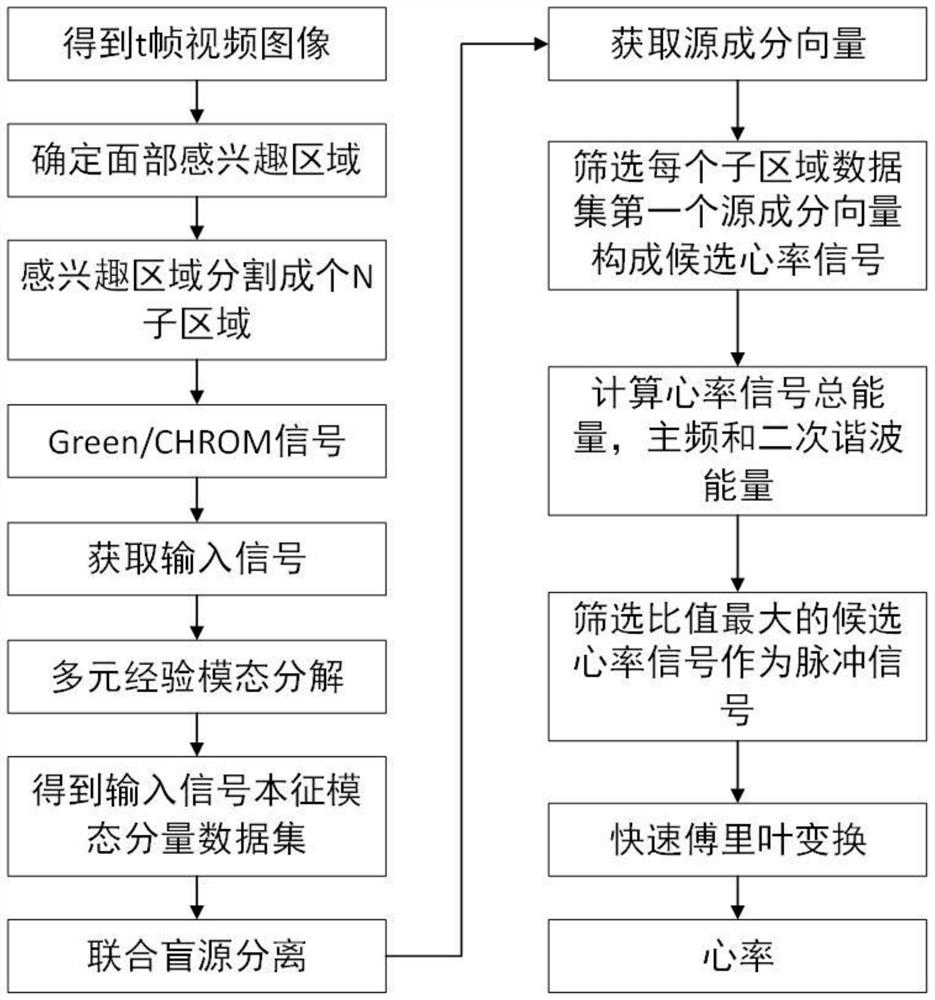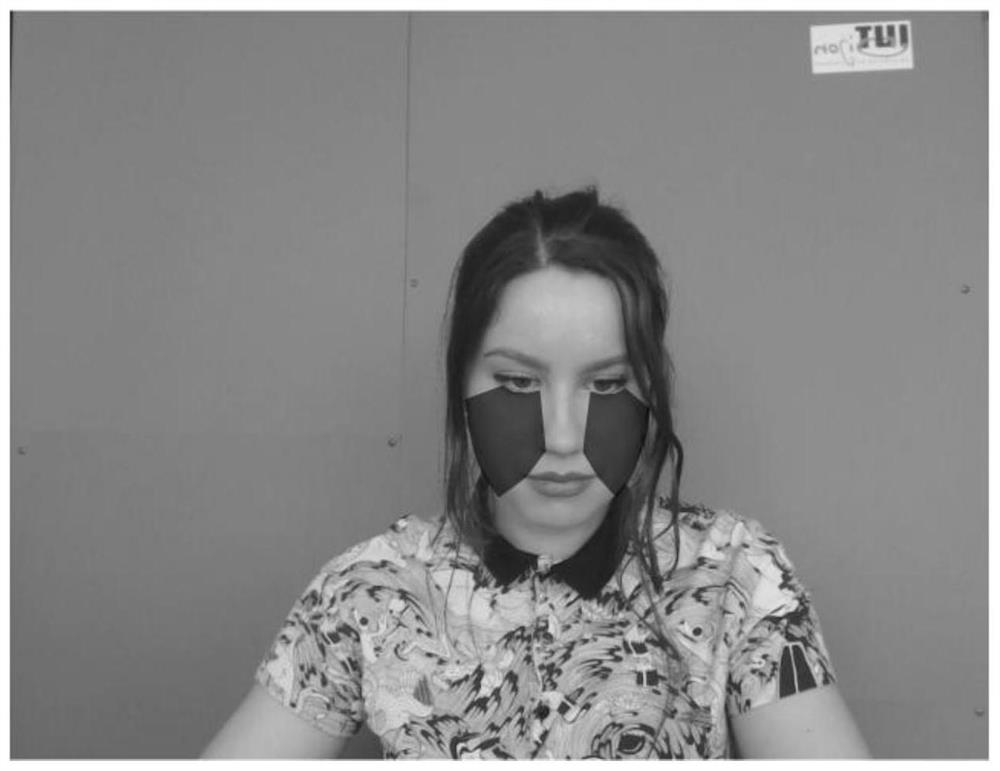Non-contact Video Heart Rate Detection Method Based on Multivariate Empirical Mode Decomposition and Joint Blind Source Separation
A technology of empirical mode decomposition and blind source separation, applied in the field of biomedical signal processing, can solve the problems of lack of robustness, lack of pre-processing of input signal denoising, not considering the correlation of human heart rate, etc., to increase the correlation effect of information
- Summary
- Abstract
- Description
- Claims
- Application Information
AI Technical Summary
Problems solved by technology
Method used
Image
Examples
Embodiment Construction
[0040] In this embodiment, a non-contact video heart rate detection method based on multivariate empirical mode decomposition and joint blind source separation, such as figure 1 As shown in Fig. 1, first obtain the face video image sequence, and determine the facial region of interest; then divide the facial region of interest into several sub-regions, and select Green or CHROM signal as the input signal of each sub-region; then use multiple experience Modal decomposition processes the input signals of all sub-regions and obtains the data set of eigenmode components of all sub-regions; the data set is processed by joint blind source separation method to obtain several source component vectors; the first source component vector of each sub-region is screened The component vector is recorded as the candidate heart rate signal, and then the main frequency and the second harmonic frequency energy proportion of all candidate heart rate signals are calculated, and the candidate heart...
PUM
 Login to View More
Login to View More Abstract
Description
Claims
Application Information
 Login to View More
Login to View More - R&D
- Intellectual Property
- Life Sciences
- Materials
- Tech Scout
- Unparalleled Data Quality
- Higher Quality Content
- 60% Fewer Hallucinations
Browse by: Latest US Patents, China's latest patents, Technical Efficacy Thesaurus, Application Domain, Technology Topic, Popular Technical Reports.
© 2025 PatSnap. All rights reserved.Legal|Privacy policy|Modern Slavery Act Transparency Statement|Sitemap|About US| Contact US: help@patsnap.com



